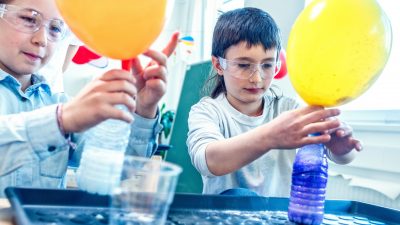Growing the vocabulary kete of our junior scientists
By Editor on June 17, 2021 in Local curriculum design
“The limits of my language mean the limits of my world”- Ludwig Wittgenstein.
In science, ākonga are expected to understand and use vocabulary that describes, explains, and defines both the practices of science, knowledge, and understanding produced about the natural and physical world. Just think about what is meant by ‘investigate’, ‘experiment’, ‘analyse’, or ‘observe’. These words have very context-specific meanings that are missed in everyday use.
With that said, I believe it is important to highlight the importance of building the confidence of our learners to engage with and understand science vocabulary. We want to encourage students to see themselves as scientists. While they learn about the physical, material, and living world, we want them to question their experiences and make provocative observations in the classroom. In fact, as we know, students are encountering science not only in the classroom but also in their day to day lives, they just might not be able to identify it themselves or engage with it.
So how can teachers help to bridge this gap? If we use rugby as an example, most of us are familiar with what a scrum, a line out, a half back is – but how did we get to that understanding? Usually, it’s from the constant revisiting of the context (watching ‘the game’ every weekend, asking questions of fellow spectators, maybe even reading up on it). It is the same in science. We have a context, we revisit it, we ask questions. Therefore, we need to plan for multiple opportunities to engage with new vocabulary in a variety of communication contexts. For example, literature, media, and small group discussion/collaboration. These in turn are well supported by learning strategies that are integral to our teaching/learning provision.
Simple strategies, such as the ones listed below, are great for embedding the key words for a topic, and continue to help with understanding them in context, written text and eventually leading to using them to construct written passages.
These examples will help support our junior scientists:
key word lists
mix and match (key words and definition)
cloze activities
word walls
graphic organisers.

Often we adopt these strategies as their usefulness is inherent to us as educators. However, we need to support students to see the same inherent usefulness – otherwise, they won’t know how or why to use them well. Both strategies and the vocabulary acquisition we want to support, depend on that little word “often”. Keep using the vocabulary ‘often’, keep enabling students to use key words in conversations with each other ‘often’, and keep using any strategies that help with understanding key vocabulary ‘often’.
Finally, encouraging the use of new or current vocabulary while “doing” science, through investigations, observations, experimenting is so important. This helps students to put key vocabulary words in a topic or lesson into context and again make sense of these words as “real” scientists.
If we can make the use and teaching of science vocabulary a regular occurrence in the science classroom, we are on the right track to enable students to become critical thinkers and deeply engage with the many opportunities they have on their life-long encounters with science.
I will end with this quote from Sir Peter Gluckman– “The process of science is not complete until the community for whom that knowledge has relevance is able to connect with it, engage with it, and discuss it. Then society is able to decide how it will use that knowledge.”
To learn more, please get in touch
Other articles you might like
What is their potential to refocus science education?
I struggle to understand why science is very largely absent from primary school teaching.
There is now widespread agreement in the scientific community that unless we reduce carbon emissions substantially, and quickly, the planet is likely to become uninhabitable in the not too distant future.
